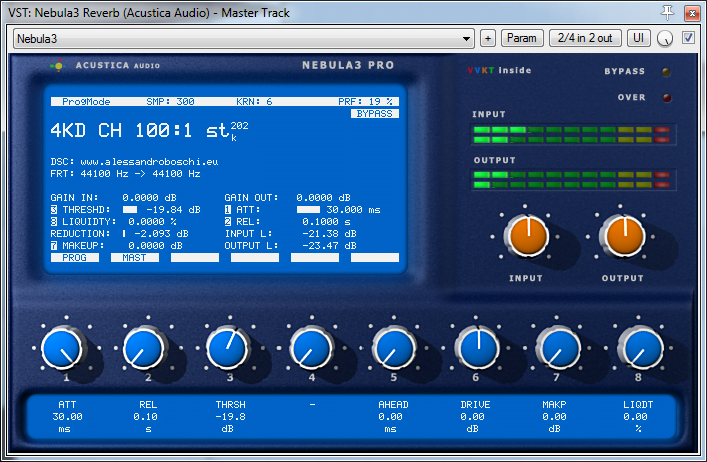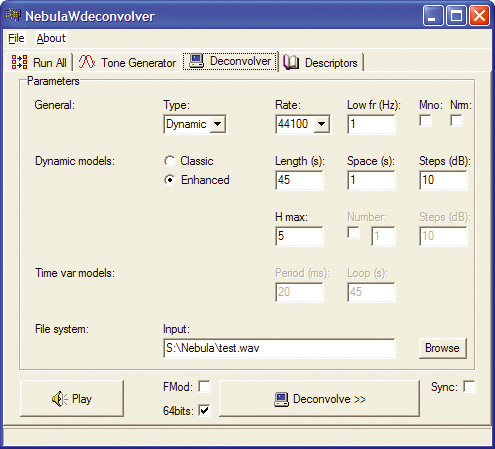Nebula 3
Mz 3 (Menzel 3) is a young bipolar planetary nebula (PN) in the constellation Norma that is composed of a bright core and four distinct high-velocity outflows that have been named lobes, columns, rays, and chakram. Sleek, compact, and portable, Capsule unleashes a world of entertainment possibilities beyond the confines of your home. Enjoy movie night in your back garden, at the campsite, or even on the beach. Nebula – 3’x 3′ Gaming Mat with Carrying Bag $ 34.99. Nebula - 3’x 3′ Gaming Mat with Carrying Bag quantity. Sold By: The Fifth Trooper. SKU: 6775 Categories: Gaming Mats, 3x3 Mats. Search for: What do you need? 3d Files; Apparel; Games. Blood Red Skies; Board Games; Bolt Action; Cruel Seas. Karen Gillan, Actress: Selfie. Karen Sheila Gillan was born and raised in Inverness, Scotland, as the only child of Marie Paterson and husband John Gillan, who is a singer and recording artist. She developed a love for acting very early on, attending several youth theatre groups and taking part in a wide range of productions at her school, Charleston Academy. At age 16, Karen.
Personal information on this system may be accessed and used for legitimate Microsoft business-related purposes only. Personal information includes any information that permits an individual to be identified or contacted (such as name, postal address, e-mail address, phone number, financial information or account numbers, social security number, or any other government issued ID numbers). Any person who uses, transfers or stores personal information must ensure that information is securely protected in accordance with the Information Classification & Handling Standard and handled in accordance with (i) any additional notices posted on this site or tool, (ii) all applicable agreements (e.g., a Microsoft Corporation Employee Agreement signed by Microsoft Employees, an Employee Information Confidentiality Agreement signed by Human Resources Employees, and the data protection language and confidentially provisions in your contracts with Microsoft if you are a Microsoft contingent staff or vendor), and (iii) any other applicable corporate policies, standards and guidelines. Information regarding corporate privacy and security policies, standards and guidelines may be found on the Microsoft Corporate Privacy Portal.

If you have questions about the data handling processes of this system, please contact your privacy manager through http://privacy/Pages/Contacts. If you wish to report a possible privacy violation, please report it at http://privacy/Pages/Policies/IncidentManagement. If you are unable to access this incident page, please report incidents through perftwc@microsoft.com.
| Emission nebula | |
|---|---|
| Planetary nebula | |
The Ant Nebula taken by Hubble Space Telescope in 2008 | |
| Observation data: J2000epoch | |
| Right ascension | 16h 17m 13.392s[1] |
| Declination | −51° 59′ 10.31″[1] |
| Distance | ~8,000ly (~2,500 pc)[2]ly |
| Apparent magnitude(V) | 13.8[3] |
| Apparent dimensions (V) | >50″ × 12″[2] |
| Constellation | Norma |
| Physical characteristics | |
| Radius | 1.0 ly[a] ly |
| Absolute magnitude(V) | 1.8[b] |
| Notable features | Three nested pairs of bipolar lobes |
| Designations | ESO 225-9,[1] Ant Nebula,[1] Chamber of Horrors[c] |
| See also: Lists of nebulae | |
Mz 3 (Menzel 3) is a young bipolarplanetary nebula (PN) in the constellation Norma that is composed of a bright core and four distinct high-velocity outflows that have been named lobes, columns, rays, and chakram. These nebulosities are described as: two spherical bipolar lobes, two outer large filamentary hour-glass shaped columns, two cone shaped rays, and a planar radially expanding, elliptically shaped chakram.[4][5]Mz 3 is a complex system composed of three nested pairs of bipolar lobes and an equatorial ellipse.[6]Its lobes all share the same axis of symmetry but each have very different morphologies and opening angles.[6]It is an unusual PN in that it is believed, by some researchers, to contain a symbiotic binary at its center.[5]One study suggests that the dense nebular gas at its center may have originated from a source different from that of its extended lobes.[5] The working model to explain this hypothesizes that this PN is composed of a giant companion that caused a central dense gas region to form, and a white dwarf that provides ionizing photons for the PN.[5]
Mz 3 is often referred to as the Ant Nebula because it resembles the head and thorax of a garden-variety ant.
Characteristics[edit]
Mz 3 is radially expanding at a rate of about 50 km/s and has its polar axis oriented at an angle of around 30° from the plane of the sky (Lopez & Meaburn 1983; Meaburn & Walsh 1985). It is sometimes compared to the more extensively studied Butterfly Nebula (M 2-9), and it is quite likely that both have a similar evolutionary history. They both have point-like bright nuclei, are narrow-waisted bipolar nebulae, and share surprisingly similar spatially dependent spectra. Because of their similarity, their differences are noteworthy. Their greatest difference is probably in their near infrared emissions. Mz 3 has no trace of molecular hydrogen emission, whereas the M 2-9 has prominent H2 emission lines in the near-IR. The lack of H2 emissions from Mz 3 is unusual given the strong correlation between such emissions and bipolar structures of PN. Additionally, the polar lobes of Mz 3 are more mottled and rounded as compared to M 2-9. Finally, Mz 3 is not known to evidence temporal variability in its polar lobes as is found in M 2-9 (Doyle et al. 2000). (Smith 2003)
The Herschel Space Observatory has detected laser light emissions from the nebula -- specifically, hydrogen recombination line laser emissions. This confirms the presence of a white dwarf with a binary companion at the heart of the nebula.[7]
Chakram[edit]
Of the morphological features of Mz 3, one of the most unusual and odd is the chakram (first noticed in 2004), a faint, large, limb brightened ellipse that appears to have its center on the PN's nucleus. While the plane of the ellipse is near the other feature's shared reflection symmetry plane, it is definitely offset. This structure's kinematics are the only such ones known among studied PN. Unlike all the other Mz 3 structures, there is no increase of velocity as the radial offset from the nucleus increases. Consequently, this must not be a simple equatorial flow despite the fact that its motion appears to be strictly radial (that is, there is no indication of rotation which would suggest that this feature is dynamically stable). All the kinematic properties of the ellipse are symmetric and very ordered relative to the nucleus, consistent with all the other Mz 3 features. Therefore, the ellipse must be historically linked to the evolution of the central star. (Santander-García et al. 2004)
The Ant Nebula is 8,000 light years away from Earth and it has a magnitude of 13.8
History[edit]
Mz 3 was discovered by Donald Howard Menzel in 1922.[2]Menzel 1922
It was studied on July 20, 1997 by astronomersBruce Balick (University of Washington) and Vincent Icke [nl] (Leiden University) on observations done with the Hubble Space Telescope. The telescope was later used on June 30, 1998 by Raghvendra Sahai and John Trauger of the Jet Propulsion Laboratory to picture the PN.

Notes[edit]
- ^ 8,000 ly distance × sin( >50″ diameter_angle / 2 ) = 1.0 ly. radius
- ^ 13.8[3] apparent magnitude – 5 * (log10(2,500 pc distance) – 1) = 1.8 absolute magnitude
- ^ Mz 3 has several components with varying degrees of collimation. It also has an unusual spectrum. Together, these entitle it to the nickname of 'The Chamber of Horrors' of planetary nebulae as given by Evans in 1959.[2][4]
- ^ abcdSIMBAD 2006
- ^ abcdSmith 2003
- ^ abGottlieb & Wallace 2005
- ^ abSantander-García et al. 2004
- ^ abcdZhang & Liu 2006
- ^ abGuerrero, Chu & Miranda 2004
- ^esa. 'A space ant fires its lasers'. European Space Agency.
References[edit]

- Gottlieb, Steve; Wallace, Kent (July 15, 2005), 'Results for Mz 3', Doug Snyder's Planetary Nebulae Web Site, Doug Snyder
- Guerrero, Martín A.; Chu, You-Hua; Miranda, Luis F. (2004), 'Menzel 3: a Multipolar Nebula in the Making', The Astronomical Journal, 128 (4): 1694–1704, arXiv:astro-ph/0407030, Bibcode:2004AJ....128.1694G, doi:10.1086/423909
- Menzel, D. N. (1922), 'Five new planetary nebulae', Harvard Bull., 177: 0, Bibcode:1922BHarO.777....0M
- Santander-García, M.; Corradi, R. L. M.; Balick, B.; Mampaso, A. (2004), 'Menzel 3: Dissecting the ant', Astronomy and Astrophysics, 426 (1): 185–194, arXiv:astro-ph/0406551, Bibcode:2004A&A...426..185S, doi:10.1051/0004-6361:20041147
- SIMBAD (December 22, 2006), Results for PN Mz 3, SIMBAD, Centre de Données Astronomiques de Strasbourg
- Smith, Nathan (2003), 'Spatial distribution of near-infrared and optical emission properties in the bipolar nebula Menzel 3', Monthly Notices of the Royal Astronomical Society, 342 (2): 383–398, Bibcode:2003MNRAS.342..383S, doi:10.1046/j.1365-8711.2003.06557.x
- Zhang, Y.; Liu, X.-W. (2006), Ian F. Corbett. (ed.), 'The Fe/Ni ratio in the Ant Nebula Mz 3', Proceedings of the International Astronomical Union, Planetary Nebulae in our Galaxy and Beyond, Proceedings of the International Astronomical Union, Symposium #234, Cambridge, MA: Cambridge University Press, 2 (S234): 547–548, arXiv:astro-ph/0605180, Bibcode:2006IAUS..234..547Z, doi:10.1017/S1743921306004170
Nebula 301334101
External links[edit]
- Media related to Ant Nebula at Wikimedia Commons
- STScI. Astro-Entomology? Ant-like Space Structure Previews Death of Our Sun. Press release: Space Telescope Science Institute. February 1, 2001.
Nebula 3d
Coordinates: 16h 17m 13.35s, −51° 59′ 10.4″
Nebula 300 Plus
